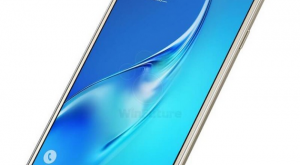Last Updated on September 20, 2024 by Mathew Diekhake
 ClockworkMod Recovery can create and restore NANDroid backups and give you everything you want out of a custom recovery image, including the chance to only backup those individual partitions to save yourself some space. So it might be tempting when you come across an article online for getting ClockworkMod Recovery installed on your device to follow it.
ClockworkMod Recovery can create and restore NANDroid backups and give you everything you want out of a custom recovery image, including the chance to only backup those individual partitions to save yourself some space. So it might be tempting when you come across an article online for getting ClockworkMod Recovery installed on your device to follow it.
But what you need to know before doing that is ClockworkMod Recovery is no longer being developed so you will have some compatibility problems should you want to install any of the latest custom ROMs. Software is s funny thing where whatever platform it is that you’re using needs to be updated continually and so do all the things that need to be compatible with it. You won’t necessarily run into problems, but the longer one thing isn’t updated to be compatible with what it is intended to work with, the larger the risk of running into problems.
Now with that being said, there is a custom recovery image out there that is being developed still today, and it’s called the Team Win Recovery Project, or TWRP Recovery for short. This is the custom recovery you want to be installing, as it is going to be compatible with all the different custom ROMs and anything else that requires compatbility due to the fact that it is a group of four guys working around the clock for a bunch of different devices, so it’s always maintained and up to date.
You won’t always find the TWRP Recovery available for every device, and it also needs to be noted that there are plenty of people who port TWRP to devices as well, and blogs aren’t always reporting on it as such. In any event, the version of TWRP Recovery found in this guide is the official version, meaning that is has come straight from the official TWRP website and has been worked on by the official developers who intended for it to be installed on this very device.
Details of Note
- The custom recovery images available in this guide are only to be installed on the Samsung Galaxy J7 (2016 Exynos) smartphone. Most devices have a custom recovery image developed specifically for it, and you shouldn’t install one that is intended for another device unless advised it is okay by a professional.
- The codename for the Samsung Galaxy J7 (2016) with Exynos processor TWRP recovery image is “j7xelte.” You will see that codename in the TWRP image file path and also from your About Device menu so you know you are flashing the right file on the right device.
- You can visit the official support thread over at XDA-Developers if you run into any problems along the way.
Files Required
- Download on your computer the latest version of TWRP Recovery: Primary (Americas) | Primary (Europe).
How to Install TWRP Recovery on Samsung Galaxy J7 (2016 Exynos)
Note: The Odin flashing tool is really easy to use, but it only works on the Windows operating system. You won’t get the flashing tool to load on a Mac or Linux computer. It doesn’t really matter what version of the Windows operating system that you’re using as long as it is something above Windows XP.
1. Download and install the Samsung USB drivers on the computer if you don’t have them already.
2. Download the firmware (.tar) file from the links above directly to the computer. Extract the file by right-clicking on it and choosing the option to extract. When you do, you’ll see the tar.md5 file inside. That’s the file you’ll be using to do the flashing.
3. Download the Odin flashing tool. It doesn’t really matter what version, but the latest is the most up to date so grab that one. Extract the Odin file and then double-click on the Odin executable file (.exe) that is found from within the Odin folder after extraction. You should now have the Odin interface open on the computer and waiting for you to connect to it.
4. Boot the Samsung mobile device into the Download Mode by first powering it down and then rebooting by holding the Volume Down + Home + Power keys at the same time.
5. A yellow warning triangle will come up on the device’s display. At this time you need to press the Volume Up button. You’ll then see the device getting into the Download Mode. It’s then ready for the flashing.
6. When in Download Mode, connect the Samsung mobile device to the computer with the USB cable.
7. If you have installed the USB drivers correctly, the Odin flashing tool should detect your device. You can tell this by observing the ID: COM port lighting up with a color, usually yellow or blue.
It doesn’t matter what color, it’s the lighting up that counts.
8. After the device is picked up by Odin, click on the PDA or AP button, depending on what button your version of the Odin flashing tool has.
9. Navigate to the stock ROM folder and upload the tar.md5 file to this location in Odin.
10. Without changing any of the default settings, click on the Start button in Odin, and the flashing then begins.
11. Wait until Odin shows a Pass message before disconnecting your device.
You can now close the Odin flashing tool and continue using your computer if you like.
That’s all.
